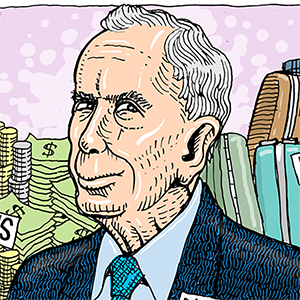City-country mortality gap widens amid persistent holes in rural health care access
Published in Health & Fitness
Alan Morgan, CEO of the National Rural Health Association, said he found the report “shocking,” though, “unfortunately, not surprising.”
The disparity warrants greater attention from state and national leaders, Morgan said.
The study does not address causes for the increase in mortality rates, but the authors note that differences in health care resources could compromise the accessibility, quality, and affordability of care in rural areas. Hospitals in small and remote communities have long struggled, and continued closures or conversions limit health care services in many places. The authors note that persistently higher rates of poverty, disability, and chronic disease in rural areas, compounded by fewer physicians per capita and the closure of hospitals, affect community health.
Roach said his past job as an epidemiologist included working with social vulnerability indexes, which factor in income, race, education, and access to resources like housing to get a sense of a community’s resilience against adverse health outcomes. A map of Arizona shows that rural counties and reservations have some of the highest vulnerability rankings.
Janice C. Probst, a retired professor at the University of South Carolina whose work focused on rural health, said many current rural health efforts are focused on sustaining hospitals, which she noted are essential sources of health care. But she said that may not be the best way to address the inequities.
“We may have to take a community approach,” said Probst, who reviewed the report before its release. “Not how do we keep the hospital in the community, but how do we keep the community alive at all?”
The disparities among demographics stood out to Probst, along with something else. She said the states with the highest rates of natural-cause mortality in rural areas included South Carolina, Mississippi, Georgia, Alabama, and others that have not expanded Medicaid, the joint federal and state health insurance program for low-income people, though there are efforts to expand it in some states, particularly Mississippi.
It’s an observation the USDA researchers make as well.
“Regionally, differences in State implementation of Medicaid expansion under the 2010 Affordable Care Act could have increased implications for uninsured rural residents in States without expansions by potentially influencing the frequency of medical care for those at risk,” they wrote.
Wesley James, founding executive director of the Center for Community Research and Evaluation, at the University of Memphis, said state lawmakers could address part of the problem by advocating for Medicaid expansion in their states, which would increase access to health care in rural areas. A large group of people want it, but politicians aren’t listening to their needs, he said. James also reviewed the report before it was published.
According to KFF polling, two-thirds of people living in nonexpansion states want their state to expand the health insurance program.
Morgan added the study focused on deaths that occurred prior to the covid-19 pandemic, which had a devastating effect in rural areas.
“Covid really changed the nature of public health in rural America,” he said. “I hope that this prompts Congress to direct the CDC to look at rural-urban life expectancies during covid and since covid to get a handle on what we’re actually seeing nationwide.”
In Arizona, the leading cause of death for people 45 to 64 in 2021 in both rural and urban areas was covid, according to Roach.
©2024 KFF Health News. Distributed by Tribune Content Agency, LLC.






Comments